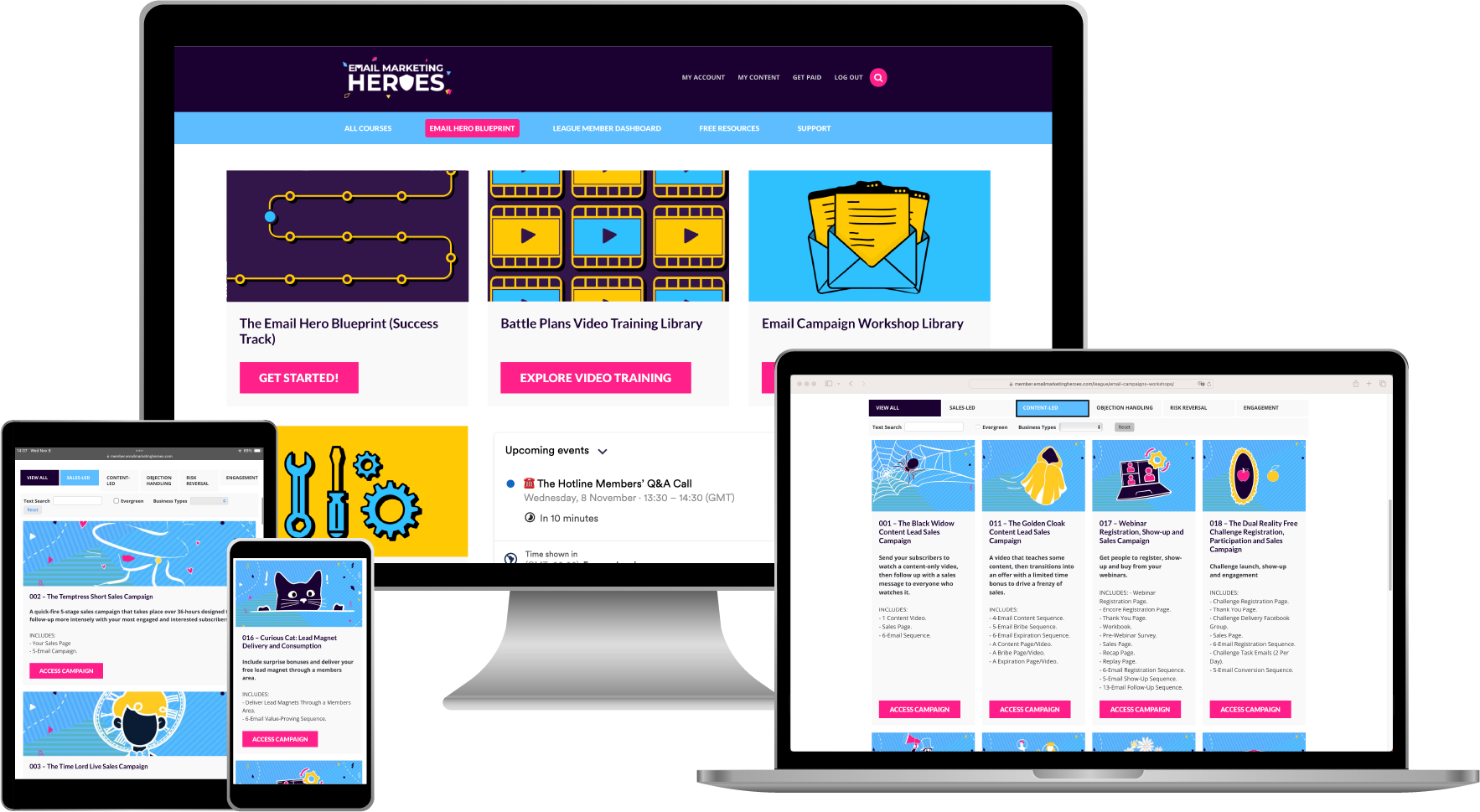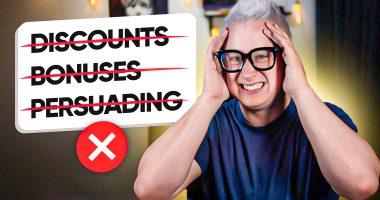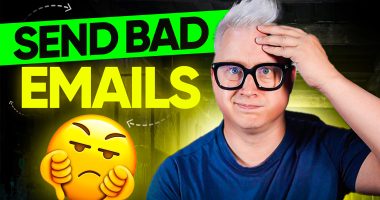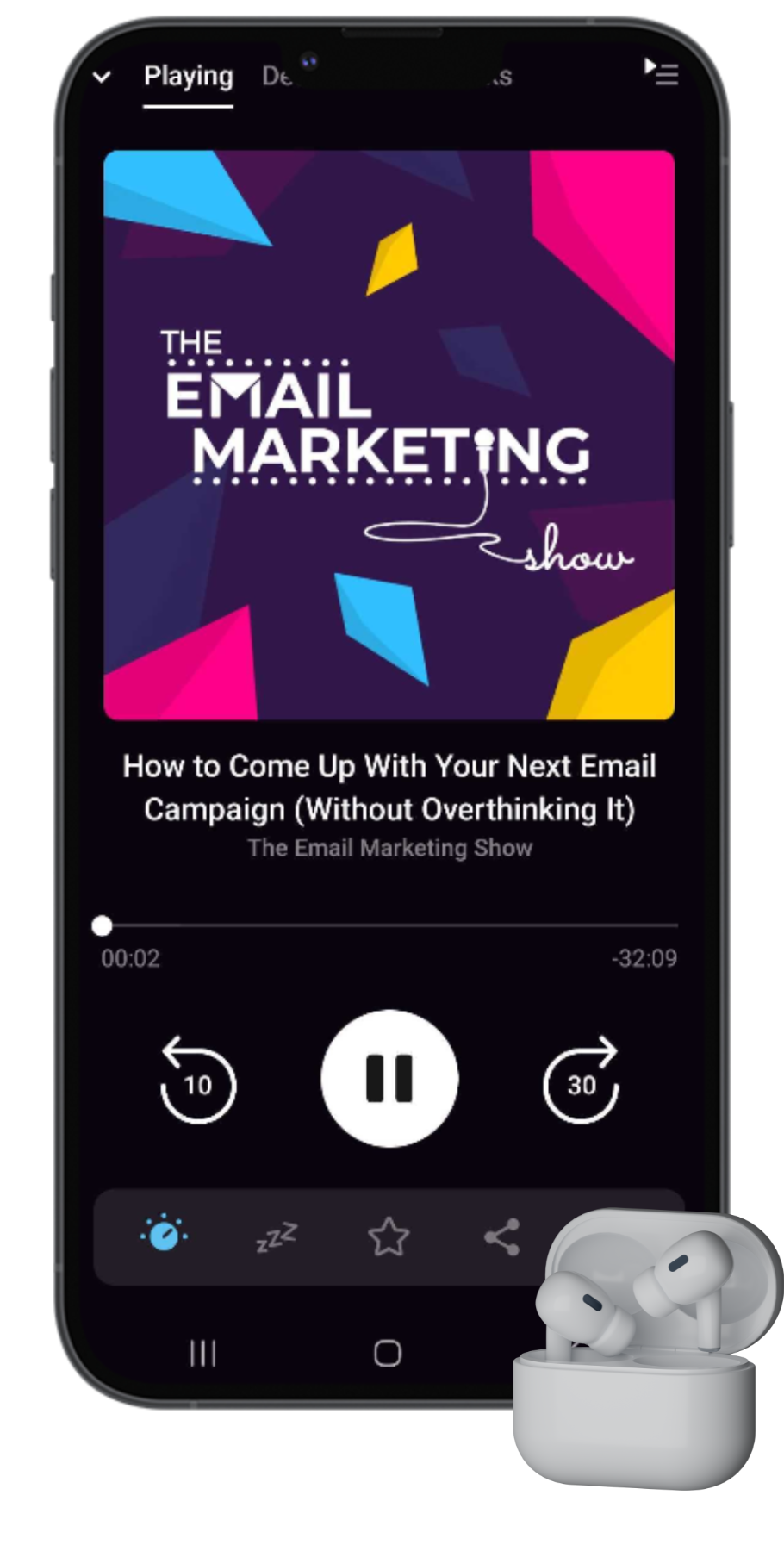
Get Your Emails Opened Using NLP – With Jon Benson
Can you use NLP for marketing to get more of your emails opened? This week we talked to Jon Benson from Copy Pro and EPIC Email about using NLP (Neuro-Linguistic Programming) in your email marketing to grab your audience's attention and get more of your emails opened.
Ready to find out a handy trick or two to sell more and ethically?
SOME EPISODE HIGHLIGHTS: (0:18) Join our FREE Facebook Group. (3:00) Is Jon really allergic to pollinated fruit? (4:47) Who is Jon Benson? (6:47) What is NLP and why does it matter in email marketing? (8:15) Creating a pattern interrupt. (9:50) How to grab people's attention. (12:04) How to 'promote' in your emails. (16:50) How to create links people will want to click on. (19:26) You don't need to create new content all the time. (21:52) Subject line of the week with Jon Benson.
Who is Jon Benson?
Jon Benson is known as the person who invented the video sales letter and was the first to sell copyrighting software. Somewhere along his business journey, Jon also started thinking about ways he could apply the same NLP and persuasion tactics to emails. Known for successfully employing and teaching techniques such as pattern interrupt and future pacing, Jon introduced these concepts into the world of email marketing. And that's how EPIC Email was born.
What is NLP and why does it matter in email marketing?
But first thing first, what is Neuro-Linguistic Programming (NLP)? Jon sees NLP as a tool to help you make sales. It's based on the idea that human beings can be persuaded to take action through simple language commands – all without being manipulated.
We all know that the word ‘manipulation' has a negative connotation, but it’s not necessarily bad. Parents ‘manipulate' their children into eating their vegetables all the time after all! For Jon, selling is the art of ethical manipulation or persuasion, and NLP is a building block for that.
Creating a pattern interrupt
One of the things we have to do at the beginning of every sales conversation (no matter the medium) is to grab attention. Because without the attention of your audience, you’re shouting into a void!
When it comes to emails, grabbing attention is not as active as it would be if you were standing on stage. So to grab the attention of your subscribers and get them to pay attention to your emails, you want to create a pattern interrupt.
Jon will typically start an email with just one or two sentences that either seem out of place or that direct someone into something they’re not normally used to seeing in an email. For example, an email that converted well for Jon started with the phrase “Look around your room”. That’s not a request – it's a command.
How to grab people's attention
The idea here is that you can use words that create patterns where you engage someone’s mind without them knowing you’re doing it. This is NLP, and it works because it's unusual – it's not something you tend to write at the start of an email.
Another email starter Jon used in the past is “What’s the one thing you remember the most about your father?” So it's all about starting your emails with something interesting or a story, so people want to click on the email and read more.
What we just described with this idea of grabbing your audience's attention is the E in the EPIC Email acronym, which stands for ‘Engaged'. How do you grab attention and engage someone? You do that by disengaging them from their current pattern of thoughts.
And this is a necessity for all email marketers because people are bombarded with messages, emails, texts, etc. So you want to do something that breaks that pattern and ‘forces' them to pay attention.
To come up with ideas for this, ask yourself what your audience is generally doing when they read your emails. How can you interrupt whatever activity they might be doing? You can do that by shouting something outrageous, but that's not the only way of doing it.
How to ‘promote' in your emails
The P in EPIC Email stands for ‘Promote'. Of course, if you have no engagement first, promotion falls on deaf ears. So make sure you grab your audience's attention first.
For Jon, promotion is about persuading at the highest level, ethically. It's not about ripping people off and trying to sell them something they don't need. Instead, you want to tell people what they're going to gain by buying your product or service.
Persuasion is benefit-driven, so tell your prospective customers what the benefits of using your product are. And in order to do that, consider their values. Who are you speaking to and what do they value? Because knowing that will inform the terminology you're going to use.
But you also need to be able to show them how you can help them through logical statements, such as studies, for example.
And then finally, you use fear, which is normally reserved for the last part of the email. This is where you explain what could happen if someone doesn't take action. And in order to do this, you need to know and understand people's pain points.
So the promotion sequence in email marketing is 1) benefit, 2) logic and 3) fear. And you want to follow this up with a direct link, if possible. You can use simple NLP commands such as, “Look here” or “Check this out”.
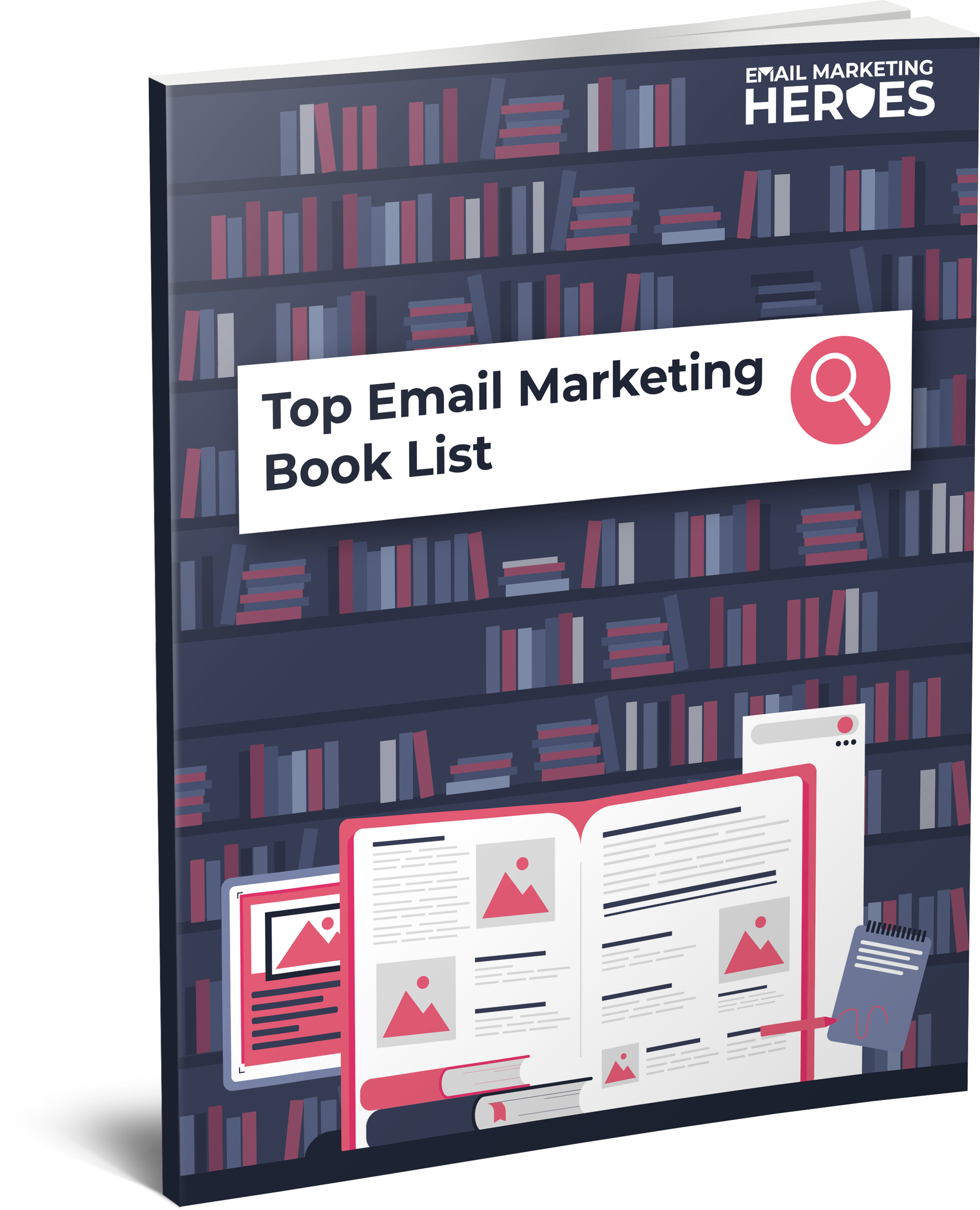
The Top 10 Books To 'Power Up' Your Email Marketing
10 book recommendations that will improve all areas of your email marketing (including some underground treasures that we stumbled upon which have been game-changing for us).
How to create links people will want to click on
Jon also gave us a great tip about creating hyperlinks. Often, Jon will use the subject line – or the opening line of the email – as the hyperlink that leads to the sales page. Why? Because if that phrase was powerful enough to grab people's attention and get the email opened, it's probably attractive enough for people to click on.
Do you need to use your subject lines word by word? Not necessarily. Jon's suggestion is to do a split test where you use the subject line verbatim and compare how that performs against an email where you change the words slightly. For example, you could expand a command such as “Click here” with “Click here to do X“.
We do something similar where we identify the links that were clicked on the most and then use them as subject lines of subsequent emails. And most of the time, we'll have great open rates on those emails because the subject line is already proven. We already know it's interesting and works.
You don't need to create new content all the time
One thing that became clear through our conversation with Jon is that people often worry about not knowing the tactics or strategies for good email marketing. But a lot of the time it’s about trying different things out and seeing what sticks.
And one of the biggest advantages of emailing every day is that you can try things out more often. The more you try something different, the more chances you have of getting good results. It’s not about creating brand-new content from scratch every single time.
If you need a great subject line for a new promotion, for example, you have a whole database of them – simply check what performed well in the past. As we always say, marketing isn’t the pretty pictures department – it's the data department! And if more marketers looked at it this way, we’d have more successful launches and enterprises.
Jon pointed out that only 10-15% of what he creates is new – the rest of the time it's about repackaging something you've used before. The art of marketing isn’t about creating something new every time – it’s about seeing what works and doing that most of the time. So feel free to experiment and see what happens.
Subject line of the week with Jon Benson
This week’s subject line (courtesy of Jon Benson) is “‘Automatic’ email selling machine”. And the word ‘automatic’ is the one that converted, so Jon put it in quotation marks to make it more effective. If you want to get attention in a subject line, quotation marks can be a good strategy.
People often read sarcasm in quotation marks, but in this case, they were used to soften the arrogance, the overpromise, and the hype. Without them, the subject line could have come across as aggressive. By softening the subject line, you give it more credibility and create less resistance.
Another way to do that is to use a question mark, which generates a question in the mind of the readers and makes them wonder why you're sending this to them. You’re creating that pattern interrupt in their subconscious brain, and that's something you can do both in subject lines and the first part of your emails.
Useful Episode Resources
About Jon
If you want to connect with Jon, you can find him at Copy Pro or EPIC Emails.
Related episodes
Making Yourself Choosable with Belinda Weaver.
Little Tricks to Write Better Emails That Aren’t Boring.
The Therapeutic Benefits of Writing Your Own Emails.
FREE list of the top 10 books to improve your email marketing
If you want to write better emails, come up with better content, and move your readers to click and buy, here's how. We put together this list of our Top 10 most highly recommended books that will improve all areas of your email marketing (including some underground treasures that we happened upon, which have been game-changing for us). Grab your FREE list here.
Join our FREE Facebook group
If you want to chat about how you can maximise the value of your email list and make more money from every subscriber, we can help! We know your business is different, so come and hang out in our FREE Facebook group, the Email Marketing Show Community for Course Creators and Coaches. We share a lot of training and resources, and you can talk about what you're up to.
Try ResponseSuite for $1
This week's episode is sponsored by ResponseSuite.com, the survey quiz and application form tool that we created specifically for small businesses like you to integrate with your marketing systems to segment your subscribers and make more sales. Try it out for 14 days for just $1.
Join The League Membership
Not sick of us yet? Every day we hang out in our amazing community of Email Marketing Heroes. We share all of our training and campaigns and a whole bunch of other stuff. If you're looking to learn how to use psychology-driven marketing to level up your email campaigns, come and check out The League Membership. It's the number one place to hang out and grow your email marketing. Best news yet? You can apply everything we talk about in this show.
Subscribe and review The Email Marketing Show podcast
Thanks so much for tuning into the podcast! Thanks so much for tuning into the podcast! If you enjoyed this episode (all about how to use NLP for marketing and getting your emails opened) and love the show, we'd really appreciate you subscribing and leaving us a review of the show on your favourite podcast player.
Not only does it let us know you're out there listening, but your feedback helps us to keep creating the most useful episodes so more awesome people like you can discover the podcast.
And please do tell us! If you don't spend time on email marketing, what do you really fill your working days with? We'd love to know!

